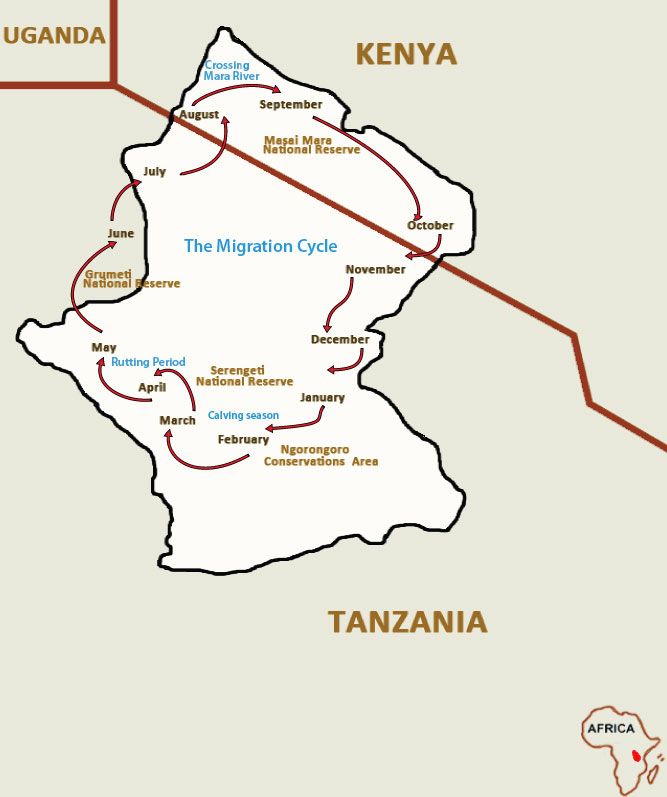This is one of the great wonders of Africa; where thousands of wildebeest, zebras, Grant's gazelle, Thompson gazelle, eland and impalas migrate from Serengeti in Tanzania to Masai Mara in Kenya, in search of fresh grazing land and water.
It is said to be the largest land mammal migration on earth with over two million mammals traveling approximately 1,800 miles round the migration cycle in east Africa. Check out some of our sample packages below or contact one of our holiday experts to structure a migration tour for you.
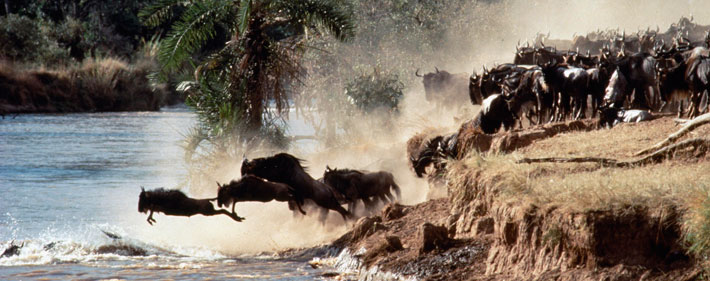
Millions of Wildebeest crossing the Masai Mara River on the Migration cycle.
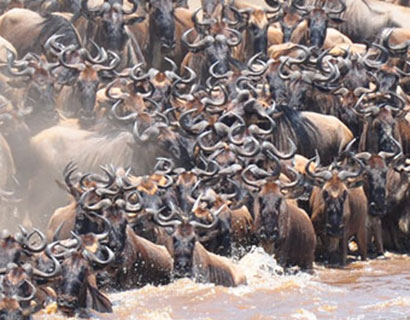
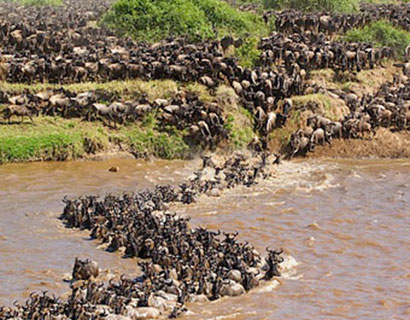
A distance view of the Wildebeest Migration.
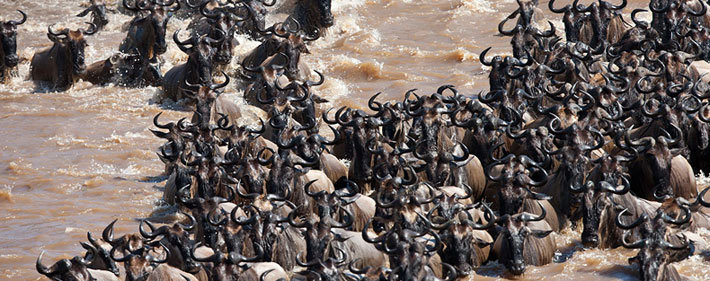
The Wildebeest evading crocodiles and struggling to cross the Mara River.
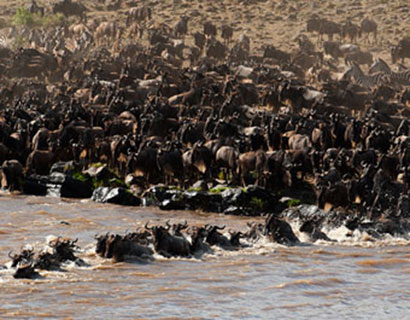
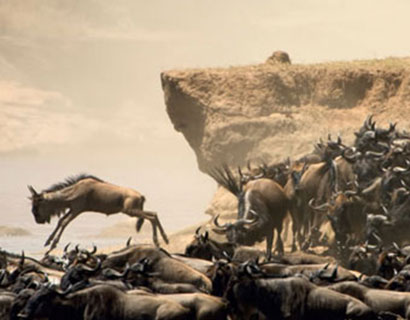
More Picture of the Great Migration.

A front view of the Wildebeest river crossing.
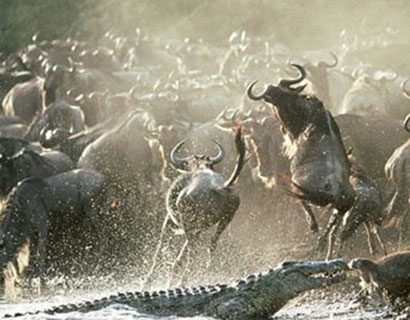
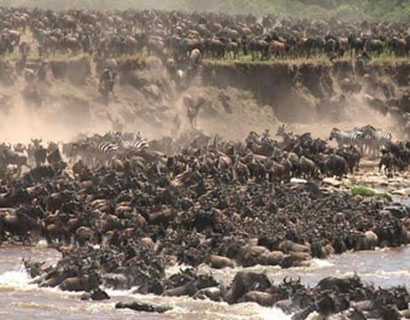
The beauty of the seven wonders of Africa.
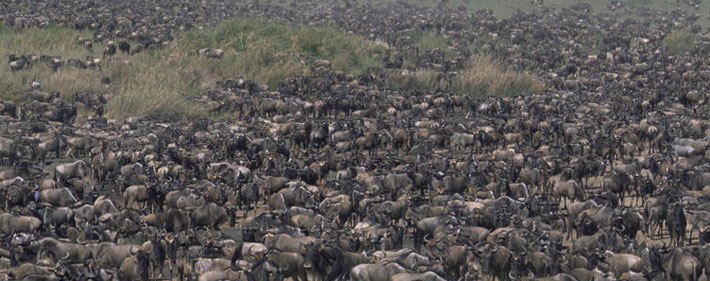
A large picture of the great migration.

On the migration cycle, wildebeest are the majority with approximately 1.5 million wildebeest; That's wildebeest are the main focus on the migration. The Wildebeest migration cycle have very amazing patterns; wildebeest have a particular movement pattern, picking out particular areas and periods for mating and giving birth to young once.
The patterns are fairly predictable depending on the annual weather and rainfall; although there is no scientific proof, the animals are said to be following the rains by listening to the lightning and thunderstorms from a distance in search of fresh nutritious grass and water.
Here is a rough pattern of an annual wildebeest migration.
Again the whole Wildebeest migration cycle starts again.....
One of the major highlights of the migration is crossing the Mara River; the mammals congregate on one side and try to cross the river alive, while the carnivores wait on the other side to hunt them down, once the large carnivores make a kill; the smaller carnivores and meat eating birds wait by the side to snatch off the kill. Its a fascinating moment and a great opportunity for photographers and people who appreciate nature and wildlife.
The other major highlight is the calving period between January and February on the open plains south of Serengeti; eight and a half months after rutting, over 400,000 wildebeest give birth to their young once. It's amazing to watch synchronized birthing of the young wildebeest in a short time span of two to three weeks and how quickly they adapt to the hostile wilderness.
Rutting period in May/June is the other major highlight of the migration; on the hilly woodlands west of Seronera, over half a million wildebeest consolidate and mate within a month, the mating is said to be influenced by the full moon in May/June.
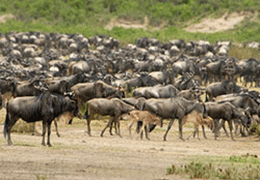
This a three days safari tour to watch the great Migration at south Serengeti, this tour is scheduled to take place between 15th January to 31st March, on this period the migration is usually south of Serengeti and is also the wildebeest calving period. The wildebeest migration is
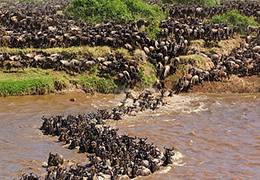
This a three days safari tour to watch the great Migration at Masai Mara, this tour is scheduled to take place between 15 July and 15th September, on this period the migration is usually along Mara River and on the open plains of Masai Mara national reserve. The
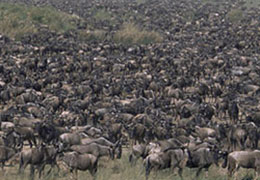
This a three days safari tour to watch the great Migration in west Serengeti, this tour is scheduled to take place between 1st May and 30th June, on this period the migration is usually west of Serengeti and is also the wildebeest rutting period. The wildebeest migration is
